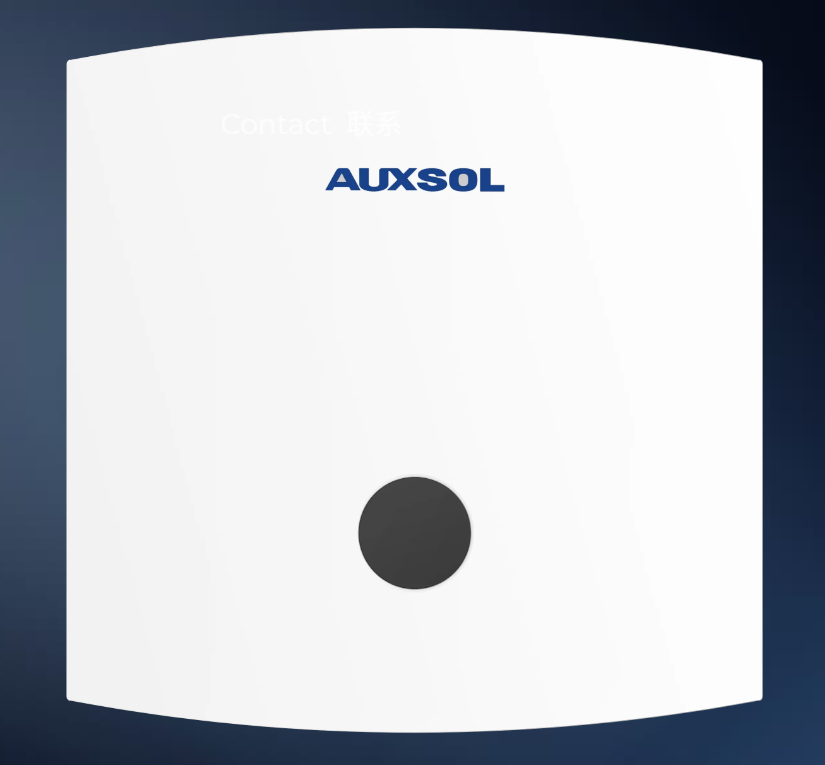Unveiling the Single-Phase Hybrid Inverter: A Comprehensive Guide
Introduction
In the ever-expanding realm of renewable energy, the single-phase hybrid inverter has emerged as a crucial component, especially when considering the diverse needs of different energy applications. As we delve into understanding this technology, we'll explore what single-phase power is, compare hybrid inverters with on-grid inverters, and see how
AUXSOL's ASG - (3.6 - 6) SL-ZH
single-phase
hybrid inverter fits into industrial energy storage solutions.
What is Single-Phase?
The Basics of Single-Phase Power
Single-phase refers to an alternating current power system where there is a single alternating voltage source. This voltage oscillates sinusoidally over time. In practical terms, in many household and small-scale electrical setups, the power supply is single-phase. For example, in a standard home electrical outlet, the voltage typically varies between positive and negative values at a frequency of 50 or 60 hertz. This single-phase power is sufficient to run a wide range of common electrical appliances such as lights, televisions, and small kitchen appliances.
Contrast with Three-Phase Systems
To better grasp the concept of single-phase, it's useful to contrast it with three-phase systems. A three-phase system consists of three alternating voltage sources that are offset in time by one-third of a cycle (120 degrees in a 360-degree cycle). Three-phase systems are commonly employed in industrial settings due to their ability to deliver power more efficiently for heavy-duty machinery. In contrast, single-phase systems are more suitable for smaller loads, like those in residential and small-business environments.
Hybrid Inverter vs. On-grid Inverter: Which is Better?
Functionality of On-grid Inverters
On-grid inverters, also called grid-tied inverters, primarily convert direct current from solar panels into alternating current that can be fed into the electrical grid. Their main function is to ensure that the solar-generated power is in a usable form for the grid. They are relatively straightforward in their operation and are cost-effective for applications where the main goal is to sell excess solar power back to the grid.
The Edge of Hybrid Inverters
Hybrid inverters, on the other hand, offer enhanced functionality. In addition to the direct current - to - alternating current conversion, they can manage energy storage systems. This means they can charge batteries when there is excess solar power and discharge them when the solar generation is low or during a grid outage. For example, during the day when solar panels are producing more power than is being consumed, a hybrid inverter can store the surplus energy in a battery. Then, at night or during cloudy days, the stored energy can be used to power the load. This ability to integrate energy storage makes hybrid inverters more versatile and suitable for applications where energy independence and backup power are priorities.
When to Choose Which
If the goal is a simple and cost-efficient solar-to-grid connection, an on-grid inverter might be sufficient. However, for residential users who want to reduce their reliance on the grid, have backup power during outages, or for small businesses looking to optimize their energy consumption, a single-phase hybrid inverter is a better choice.
C&I Energy Storage Solutions and Single-Phase Hybrid Inverters
Role of Single-Phase Hybrid Inverters in Industry
In commercial and industrial settings, energy storage is becoming increasingly important for reasons such as peak-shaving, load-leveling, and ensuring an uninterrupted power supply. Single-phase hybrid inverters, like AUXSOL's ASG - (3.6 - 6) SL-ZH, can play a significant role. These inverters can manage the power flow between solar panels, batteries, and the industrial electrical system. For instance, during peak electricity demand periods, the stored energy in the batteries, managed by the hybrid inverter, can be used to supplement the grid power, reducing the overall electricity cost for the industry.
AUXSOL's ASG - (3.6 - 6)SL - ZH for C&I Use
The ASG - (3.6 - 6) SL-ZH from AUXSOL is well-equipped for C&I applications. It offers a power range from 3.6kW to 6kW, which can meet the energy needs of various small-to-medium-scale industrial processes. Its wide MPPT (Maximum Power Point Tracking) voltage range ensures efficient extraction of power from solar panels, even under less-than-ideal sunlight conditions. The IP66 protection rating makes it suitable for harsh industrial environments, whether installed indoors or outdoors. With features like 24-hour intelligent energy management and <10ms UPS-level switching, it can provide a seamless and reliable power supply, crucial for industrial operations.
Integration with C&I Energy Storage Systems
This inverter can be easily integrated with different types of C&I energy storage systems. It has a suitable battery voltage range, allowing it to work with a variety of battery chemistries commonly used in C&I setups. The multiple communication methods, including 4G, WIFI, and RS485, enable it to connect to the AUXSOL cloud monitoring platform. This integration provides real-time monitoring and control of the energy storage system, helping industries optimize their energy usage and reduce costs.
Conclusion
Single-phase hybrid inverters are a powerful solution for a variety of energy needs, from residential to C&I applications. Understanding the differences between hybrid and on-grid inverters, as well as the nature of single-phase power, is essential for making informed decisions in the renewable energy space. AUXSOL's ASG - (3.6 - 6) SL-ZH single-phase hybrid inverter stands out as a reliable and feature-rich option for those seeking efficient energy management and storage solutions.

